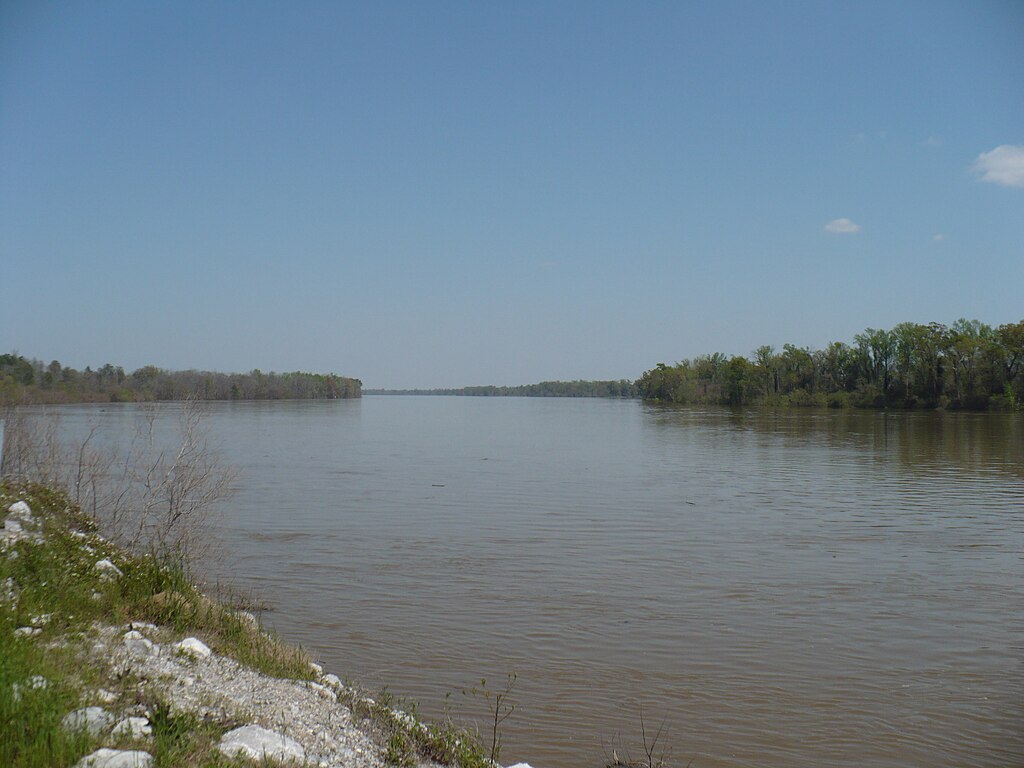Fort Stoddert in Alabama is a historical landmark with deep ties to early U.S. military and political history. It was built as a federal fort in 1799 and is located near the Alabama and Oconee Rivers.
It featured log buildings with clay floors and served as a strategic military installation, crucial for events like Aaron Burr’s imprisonment and the Creek Indian War.
Historical markers and public domain journal notes, such as those by Captain Bartholomew Schaumburgh and Ephraim Kirby, provide additional information.
Situated along a post road near the southern border of central Georgia, it influenced road construction and regional development in south-central Mobile County.
The Monroe County Heritage Museums preserve its legacy, highlighting its role as a border fort akin to Fort Morgan and its historical significance to the capital of Georgia.
Digital cameras now capture its remnants for educational purposes.
History of Fort Stoddert (Alabama)

Fort Stoddert was pivotal in the early United States military and political landscape.
Its involvement in events like the imprisonment of Aaron Burr and its impact on the Creek War are key points of interest.
Role in Early United States Expansion
Fort Stoddert was integral to the United States’ early expansion efforts.
Established in 1799 near present-day Mobile, Alabama, it served as a military outpost in the Mississippi Territory, crucial for American interests.
Acting Secretary of War Benjamin Stoddert, after whom the fort was named, aimed to secure southern territories and protect American settlers from potential threats.
The fort was constructed as a stockade fort, providing much-needed defense and signaling the United States’ growing presence there.
Its strategic location enabled the U.S. to influence the Mobile District and maintain control over the surrounding regions, fostering stability and growth in these frontier areas.
Aaron Burr’s Imprisonment
Fort Stoddert is perhaps most famously associated with the imprisonment of Aaron Burr, the former Vice President of the United States.
After his controversial and ultimately failed plans to create an independent nation, Burr was arrested in 1807.
Authorities detained him at Fort Stoddert due to its secure and remote location.
Burr’s imprisonment highlighted Fort Stoddert’s role in the enforcement of federal law and the protection of national security.
It served as a reminder of the United States’ readiness to respond to internal threats and maintain order within its borders. This event underscored the fort’s strategic importance beyond mere military operations.
Impact on the Creek War and Mississippi Territory
Fort Stoddert was a key military site during the Creek War (1813–1814).
It offered logistical and strategic support to American forces combating the Creek Nation, British allies during the War of 1812.
The fort’s presence helped secure American victory in the region, contributing to the U.S. gaining control over the Mississippi Territory.
Fort Stoddert’s significance continued as it facilitated the movement of troops and supplies, bolstering the United States’ military campaigns.
Its role in these conflicts furthered the U.S. expansion efforts and ensured the consolidation of American power in these newly acquired territories.
The fort’s legacy lies in its contribution to the United States’ territorial and political dominance in the early 19th century.
Explore More: Army Forts in Alabama
Geographical Context and Structure
Fort Stoddert, located in Alabama, played a significant role in the region’s history.
Its strategic position and unique structural design highlight its importance during its operational period.
Confluence of Tombigbee and Alabama Rivers
Fort Stoddert was situated near the confluence of the Tombigbee and Alabama Rivers.
This junction created a vital transportation route, bolstering the fort’s strategic significance.
The rivers connected to the Gulf Coast, facilitating the movement of goods and troops.
The waterways were crucial lifelines for supply lines and communication during the fort’s active years.
This confluence also served as a natural defense against potential invasions and offered access to inland regions.
Mount Vernon Landing and Surrounding Regions
Mount Vernon Landing, located near Fort Stoddert, provided essential docking and loading facilities.
Ships and barges transported supplies and personnel through this area. The landing’s proximity to the fort ensured a steady influx of resources.
The surrounding regions included rich agricultural lands and areas controlled by the Creek Nation.
The interaction with Creek lands influenced the fort’s operations. The area was also vital for monitoring the movement around Fort Mims and other significant locations.
Structural Layout of the Fort
The structural layout of Fort Stoddert included defensive earthworks and wooden stockades.
Positioned on a bluff of the Mobile River, the fort had a commanding view of the surrounding regions.
This vantage point was essential for surveillance and defense.
Barracks, storage facilities, and administrative buildings were strategically placed within the fort.
These structures supported military operations and housed the personnel stationed at the fort. Their layout facilitated quick mobilization and efficient resource management.
Explore More: 19 Historic Forts in Alabama
Fort Stoddert as a Transport & Communication Hub
Fort Stoddert played a pivotal role in transportation and communication at that time.
Its strategic positioning facilitated the movement of people, goods, and information, influencing local and regional activities.
Old Federal Road and Postal Service
The Old Federal Road was a crucial travel route connecting various parts of Alabama and beyond.
It served as the interstate highway of its day, where postal riders delivered mail efficiently.
Adequate overnight lodgings along the route ensured that travelers and postal workers had rest stops.
Establishing a post office at Fort Stoddert enhanced its importance as a communication hub, supporting the swift dissemination of news and official correspondence.
Port of Entry and the Capture of Mobile
Fort Stoddert was designated as a port of entry, marking its significance in trade and immigration.
The capture of Mobile, a strategic port city, further underscored its role in controlling trade routes along the Gulf Coast.
This facilitated monitoring goods and people entering the region, strengthening economic activities and territorial governance.
The fort’s presence provided a secure base for military operations to maintain control over key areas.
Stagecoach Route and Modern Roadways
The fort’s location along a well-traveled stagecoach route made it an integral stop for travelers and goods moving through the region.
This early transportation network laid the groundwork for modern-day trip routes that now crisscross Alabama.
The legacy of these routes is seen in current major highways and roadways that still trace paths close to the old stagecoach routes, ensuring that Fort Stoddert’s impact on transportation continues.

Cory is a website owner and content creator who enjoys fishing, history, coin collecting, and sports, among other hobbies. He is a husband and father of four.
Romans 15:4 For whatever was written in former days was written for our instruction, that through endurance and through the encouragement of the Scriptures we might have hope.

